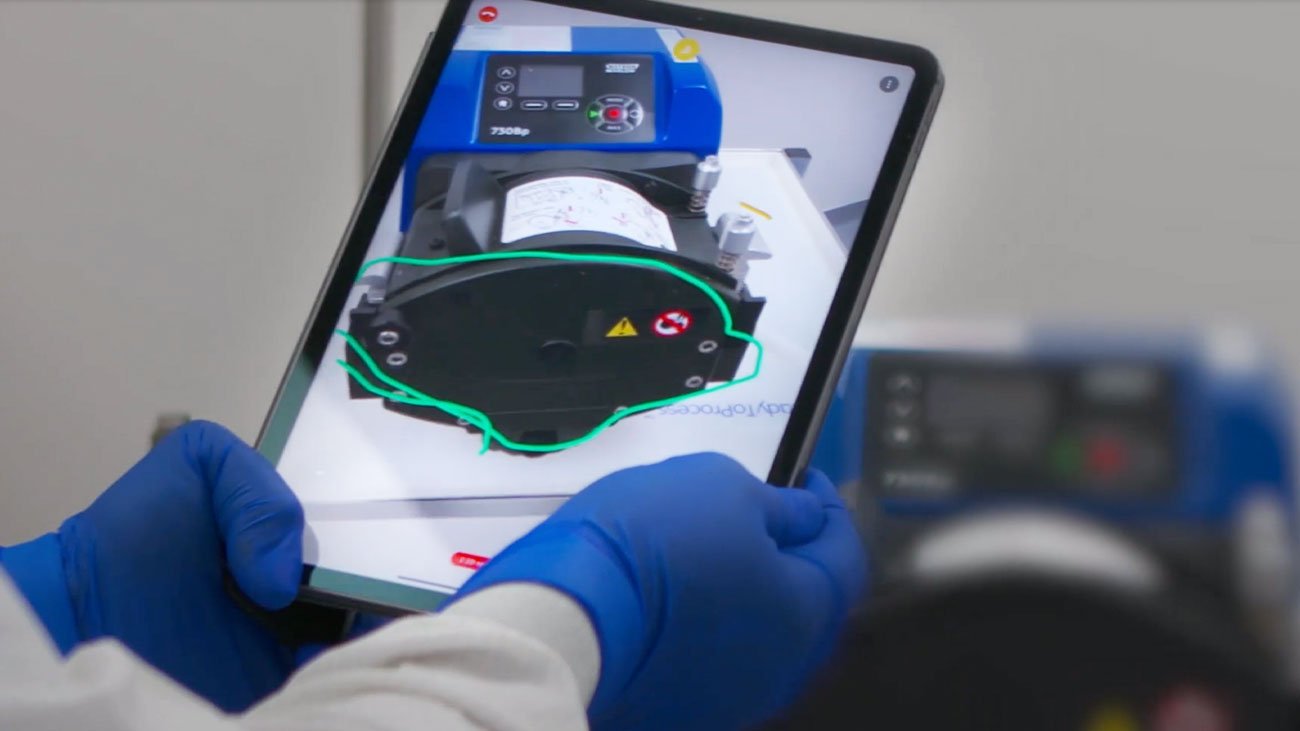As manufacturers ourselves, Rockwell Automation was asking the same question in terms of our own operations and how we service and support our global customer base. Remote virtual support tools quickly provided answers that not only align with social distancing protocols – but actually improve collaboration and workers’ technical support experience.
Imagine collaborating with a technical expert on your phone or tablet – just like you would with a friend on FaceTime – only better. It’s possible with this augmented reality application that includes a live video feed to allow an experienced technician to view your equipment in real time. Workers on both sides of the video conversation can draw on the screen to pinpoint trouble spots and possible solutions.
Augmented reality is also the key to other tools that ramp up expert interaction at a safe distance. For example, using this tool, your subject matter experts can video record step-by-step instructions for procedures as they perform them. To bolster confidence and accuracy, other employees can view the recordings in a virtual environment via a wearable or mobile device as they perform the same tasks.
Maintain personal space and optimize traffic flow
As social distancing becomes the next normal, manufacturers must reevaluate protocols not only in environmentally controlled spaces like labs and cleanrooms – but also across break rooms, warehouses, and other areas.
Simply put, enforcing protocols and maintaining the recommended 2-meter/6-foot distance between workers isn’t easy. But simulation can help.
Applying lessons learned to improve patient care in hospital settings, we are helping life sciences companies use simulation software and 3D modeling to better understand workflow bottlenecks – and make improvements. The software can also model how quickly disease can be transmitted in high-traffic areas – and help forecast the impact of potential changes. For example, your facility may best minimize risk by staggering employees entering and existing the facility. Others may find expanding employee decontamination or gowning areas is a better option.
Another way to maintain distancing? Use a thin client management platform to keep your plant running efficiently with fewer workers on-site. Here’s one way. Our solution delivers content on mobile devices and allows terminal sharing with any other mobile, PC or thin client terminal. IP or USB camera feeds can also be incorporated. As a result, a single worker has a much wider scope of visualization – and can monitor more areas of the facility without entering them.
A thin client management platform also provides cost-effective ways to create segregated, “socially distant” control rooms. And enables your employees to work from home with secure access to the applications they need – with minimal impact to your IT infrastructure.
Is a remote FAT in the future?Another challenge manufacturers will likely face at some point: How to achieve social distance while moving forward with a new line installation?
This is another area where virtual environments can help. Today, more machine builders are using dynamic digital twins to solve equipment challenges in the virtual world – well before equipment is delivered on-site. Some are extending this process and adopting virtual commissioning to connect a machine to the real operational logic of its control system and learn how it will operate long before it is built.
But what if you could take that concept one step further? And use virtual tools to connect skids from multiple OEMs, simulate real operation – and perform a Factory Acceptance Test (FAT) in a secure cloud environment? This is one approach we are exploring that would enable a large percentage of work to be done remotely – plus streamline future on-site installation, the Site Acceptance Test (SAT) and validation.
Theoretically, the process could also extend vertically to simulate interaction with the manufacturing execution system (MES) to create an open sandbox for testing and troubleshooting.
But these are just some of the ways virtual environments and digital tools are making a significant impact in real-world life sciences manufacturing. We are all learning new ways of working in the physical world. Know that as technology evolves, we are committed to helping you uncover new ways to improve collaboration and productivity.
Learn more about our solutions for the life sciences industry.


